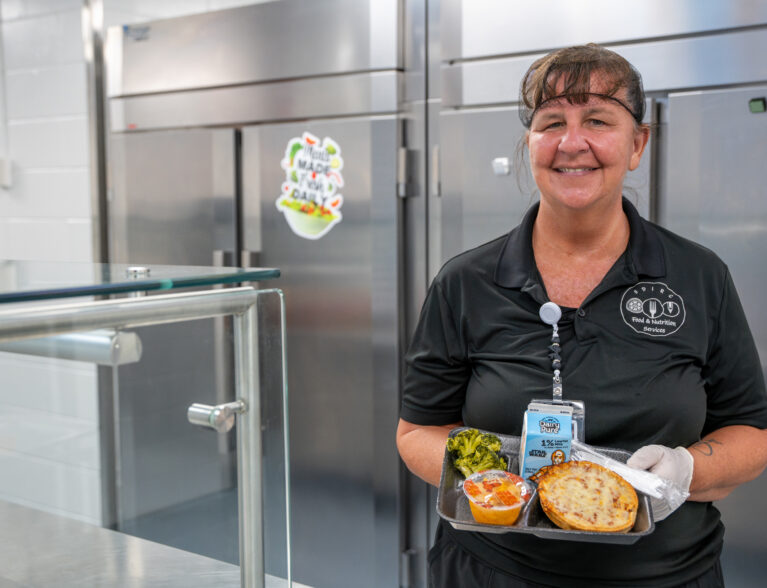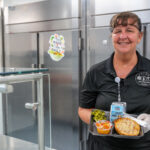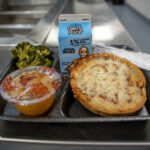
For years, the School District has been offering in June and July free breakfasts and lunches to children in the county, providing a community service that Superintendent David Moore said helps keep students healthy during summer-vacation months.
“It might not be the best meal of the day, but, for some kids, it’s the only consistent meals they’re getting,” Moore said recently. “We see a need in the community, and we’re able to respond without spending any local tax dollars.
“That’s why we’ve expanded the program.”
The free meals are now being provided at designated times at five schools – from Oslo Middle to Sebastian River Middle – and six other sites in the community, including some where children can pick up seven-day meal packs.
Some community sites provide mobile eat-in facilities, while others offer drive-thru service.
The meals, which are provided through the district’s Food & Nutrition Department, are available to children 18 and under. There’s no registration or income-eligibility requirement.
Last summer, the district served up 14,510 breakfasts, 35,650 lunches and 13,108 snacks. The projections for this summer – with American consumers paying record-high prices for food – are 17,000 breakfasts, 40,000 lunches and 15,000 snacks.
The free-meals program will continue into late July, with the end dates varying by location.
“They’re good meals,” Moore said, explaining that the menus follow the “old-school food pyramid,” which called for a balance of proteins, grains, vegetables and fruits, along with a snack.
Moore said the morning offerings might feature waffles, eggs or a breakfast burrito, while lunches can include chicken or some other meat, pizza, salads and fruit cups bar.
Now, though – unlike the school cafeteria meals of yesteryear – kids may choose from at least a couple of options.
The funding for the meals comes solely from federal dollars dispersed by the state, Moore said. As a result, the district is required to account for all the food dispensed by through the program, which utilizes volunteers from local civic and church groups.
Moore said providing the summer meals takes a tremendous effort, but, he enthusiastically added, “Holy cow, the involvement is worth it.”
Especially now.
Two years ago, the Florida Legislature – continuing its firm embrace of school choice, and with the full support of Gov. Ron DeSantis – dramatically expanded its voucher program by removing income and enrollment restrictions, making public money available to almost every family in the state.
That action forced the district to expand its offerings to compete for an increasing number of the locally generated tax dollars earmarked for education being diverted to private, religious and at-home schools.
“Every conversation we have involves school choice,” Moore said. “We’re competing for the right to educate kids in our community. We know we have the best product, but we need to advertise and market what we’re doing.
“Programs like this help us build connections to the community and provide opportunities to talk to people about what our district is doing,” he added. “These summer meals help attract kids to our schools. That’s why it’s important for us to get the word out.”
That’s not the only reason, though.
In the district’s announcement of the expanded meal schedule, Moore said, “Summer should be a time of joy and exploration, not hunger.” Moore also believes that keeping kids fed and healthy during the summer months could enhance their performance when they return to the classroom.
Photos provided





